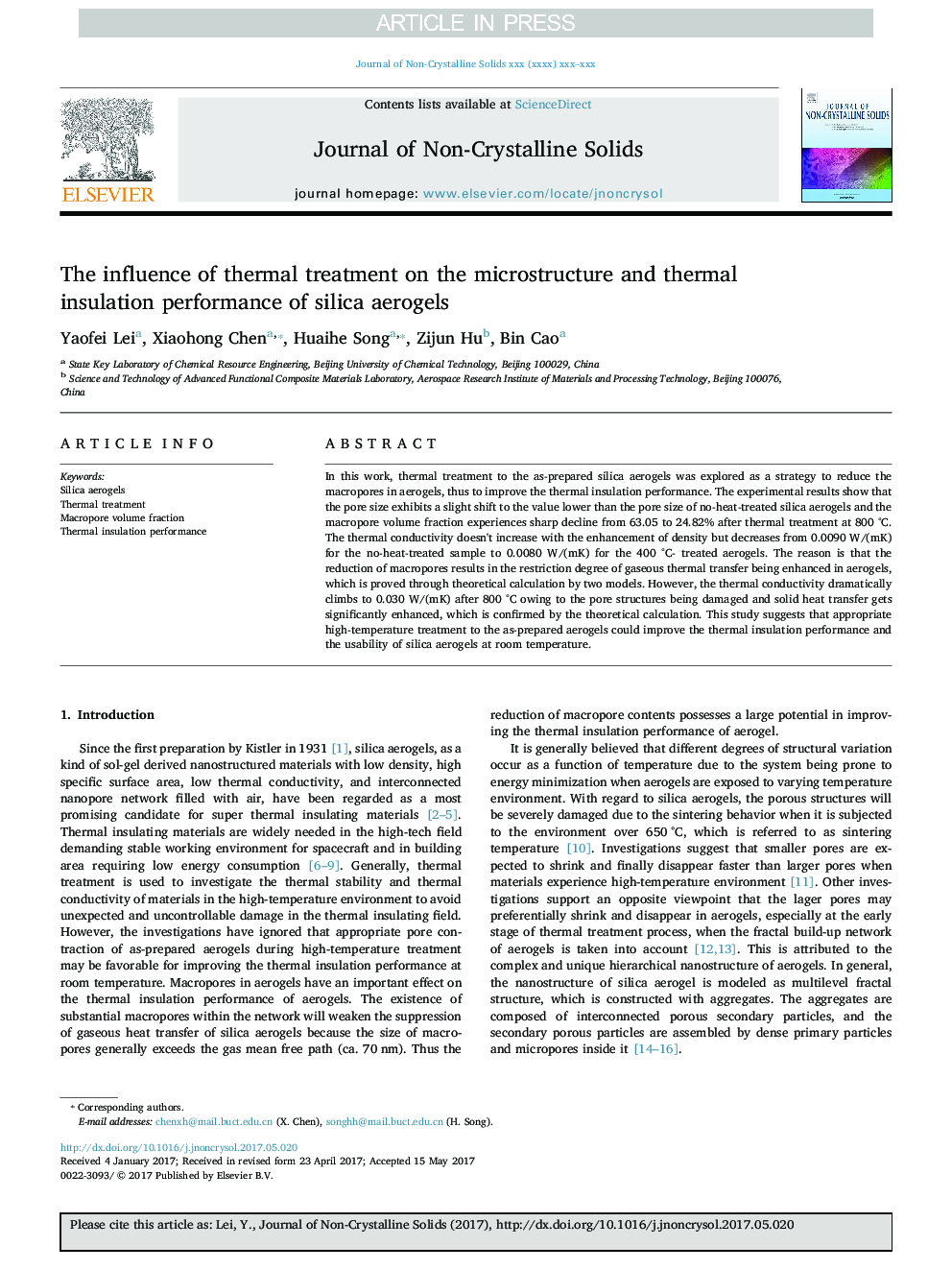| Article ID | Journal | Published Year | Pages | File Type |
|---|---|---|---|---|
| 5441194 | Journal of Non-Crystalline Solids | 2017 | 6 Pages |
Abstract
In this work, thermal treatment to the as-prepared silica aerogels was explored as a strategy to reduce the macropores in aerogels, thus to improve the thermal insulation performance. The experimental results show that the pore size exhibits a slight shift to the value lower than the pore size of no-heat-treated silica aerogels and the macropore volume fraction experiences sharp decline from 63.05 to 24.82% after thermal treatment at 800 °C. The thermal conductivity doesn't increase with the enhancement of density but decreases from 0.0090 W/(mK) for the no-heat-treated sample to 0.0080 W/(mK) for the 400 °C- treated aerogels. The reason is that the reduction of macropores results in the restriction degree of gaseous thermal transfer being enhanced in aerogels, which is proved through theoretical calculation by two models. However, the thermal conductivity dramatically climbs to 0.030 W/(mK) after 800 °C owing to the pore structures being damaged and solid heat transfer gets significantly enhanced, which is confirmed by the theoretical calculation. This study suggests that appropriate high-temperature treatment to the as-prepared aerogels could improve the thermal insulation performance and the usability of silica aerogels at room temperature.
Related Topics
Physical Sciences and Engineering
Materials Science
Ceramics and Composites
Authors
Yaofei Lei, Xiaohong Chen, Huaihe Song, Zijun Hu, Bin Cao,
